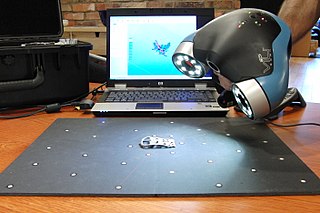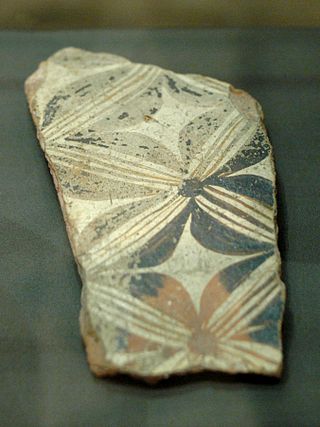Education and career
Hubert Mara graduated (matura) in electrical engineering from the HTBLuVA in Wiener Neustadt and studied computer science at the TU Wien, graduating in 2006. Already during his studies he participated in excavations in Israel and Peru, where he learned to combine methods of computer science and humanities. Early on, he participated in the development of new methods here, such as for 3D recording of ancient pottery for the Austrian Corpus Vasorum Antiquorum. After graduation, he received a Marie Curie Fellowship, with the help of which he went to the University of Florence, where he joined the Cultural Heritage Informatics Research Oriented Network (CHIRON) [1] was involved in the development of the London Charter for the Computational Visualization of Cultural Heritage.
In 2009, Mara moved to the Interdisciplinary Center for Scientific Computing (IWR) at the Universität Heidelberg. In Heidelberg, his interdisciplinary doctorate was awarded in 2012, with Willi Jäger and Hans Georg Bock as reviewers. As part of the dissertation, he developed the GigaMesh Software Framework. This was a free and open source modular software for displaying, editing and visualizing 3D data. In practice, it is used to make things visible again that can no longer be captured with the normal human eye. Thus, it was now possible to make the writing on weathered gravestones legible again, [2] [3] to make fingerprints on archaeological ceramics visible, or to make damaged cuneiform texts legible again. He received his doctorate in 2012, after which Mara founded the Forensic Computational Geometry Laboratory (FCGL or FCGLab), also at Heidelberg University. He leads the FCGLab, which was funded as a junior research group by the Deutsche Forschungsgemeinschaft under the 2nd German Universities Excellence Initiative from 2014 to 2020. [4] The group was dedicated to further projects on 3D computer vision, but also machine learning for archaeological finds. In 2014, he was offered a professorship at the University of Cologne without tenure track, which he declined. [5] In Heidelberg, he had the doctoral right between 2014 and 2020, and was able to supervise three PhD students in the process. [6] In 2020, they were awarded the European Heritage Award of the Europa Nostra in the field of research for their collaboration on the project Scanning for Syria. As of June 2020, Mara moved to the Mainz Centre for Digitality in the Humanities and Cultural Studies (mainzed) as executive director. [7] Since 1. November 2021, Mara is a tenure-track-junior professor of eHumanities at the Institute of Computer Science at University of Halle. He is an Editor-in-Chief of the it - Information Technology journal series at De Gruyter, [8] which is one of the oldest publication media of computer science in Germany. In 2023, he was offered professorships at the University of Augsburg and the FU Berlin. [9] In 2024 rejected the offers from Augsburg and Halle and joined the Department for Department of History and Cultural Studies at FU Berlin as Professor for Archaeoinformatics. [10]
Computational archaeology is a subfield of digital archeology that focuses on the analysis and interpretation of archaeological data using advanced computational techniques. This field employs data modeling, statistical analysis, and computer simulations to understand and reconstruct past human behaviors and societal developments. By leveraging Geographic Information Systems (GIS), predictive modeling, and various simulation tools, computational archaeology enhances the ability to process complex archaeological datasets, providing deeper insights into historical contexts and cultural heritage.

Cuneiform is a logo-syllabic writing system that was used to write several languages of the Ancient Near East. The script was in active use from the early Bronze Age until the beginning of the Common Era. Cuneiform scripts are marked by and named for the characteristic wedge-shaped impressions which form their signs. Cuneiform is the earliest known writing system and was originally developed to write the Sumerian language of southern Mesopotamia.

Assyriology, also known as Cuneiform studies or Ancient Near East studies, is the archaeological, anthropological, historical, and linguistic study of the cultures that used cuneiform writing. The field covers Pre Dynastic Mesopotamia, Sumer, the early Sumero-Akkadian city-states, the Akkadian Empire, Ebla, the Akkadian and Imperial Aramaic speaking states of Assyria, Babylonia and the Sealand Dynasty, the migrant foreign dynasties of southern Mesopotamia, including the Gutians, Amorites, Kassites, Arameans, Suteans and Chaldeans. Assyriology can be included to cover Neolithic pre-Dynastic cultures dating to as far back as 8000 BC, to the Islamic Conquest of the 7th century AD, so the topic is significantly wider than that implied by the root "Assyria".

3D scanning is the process of analyzing a real-world object or environment to collect three dimensional data of its shape and possibly its appearance. The collected data can then be used to construct digital 3D models.

The Gottfried Wilhelm Leibniz Prize, or Leibniz Prize, is awarded by the German Research Foundation to "exceptional scientists and academics for their outstanding achievements in the field of research". Since 1986, up to ten prizes have been awarded annually to individuals or research groups working at a research institution in Germany or at a German research institution abroad. It is considered the most important research award in Germany.

Corpus Vasorum Antiquorum is an international research project for documentation of ancient ceramics. Its original ideal target content: any ceramic from any ancient location during any archaeological period, proved impossible of realization and was soon restricted to specific times and periods. As the project expanded from an original six nations: England, Belgium, Denmark, France, the Netherlands, and Italy, to include the current 28, the topic specializations of each country were left up to the commission for that country. The French commission, serves in an advisory position.

The Interdisciplinary Center for Scientific Computing is a scientific research institute of the Heidelberg University, Germany. It centralizes scientific activity and promotes research and work in scientific computing. Founded in 1987 by the Heidelberg University and the state of Baden-Württemberg, IWR participates in joint project and cooperations with industry in Germany as well as abroad. As a research institute with about 380 staff, IWR is considered one of the world's largest research centers for scientific computing.
The German Science and Humanities Council is an advisory body to the German Federal Government and the federal state governments. It makes recommendations on the development of science, research, and the universities, as well as on the competitiveness of German science. These recommendations involve both quantitative and financial considerations, as well as their implementation. Funding is provided by the federal and state governments.
Polynomial texture mapping (PTM), also known as Reflectance Transformation Imaging (RTI), is a technique of imaging and interactively displaying objects under varying lighting conditions to reveal surface phenomena. The data acquisition method is Single Camera Multi Light (SCML).

Hermann Spieckermann is a German biblical scholar, historian of ancient Near Eastern religion, and Protestant theologian. He currently holds a chair for Old Testament, or Hebrew Bible, in the Faculty of Theology at the University of Göttingen, in Germany. Through extensive authorial, editorial, and organizational undertakings, Spieckermann has exerted considerable influence on Hebrew Bible research.
Cultural property imaging is a necessary part of long term preservation of cultural heritage. While the physical conditions of objects will change over time, imaging serves as a way to document and represent heritage in a moment in time of the life of the item. Different methods of imaging produce results that are applicable in various circumstances. Not every method is appropriate for every object, and not every object needs to be imaged by multiple methods. In addition to preservation and conservation-related concerns, imaging can also serve to enhance research and study of cultural heritage.
Mainzed is a joint initiative of six scientific institutions to promote digital methodology in the humanities and cultural sciences in Mainz, Germany. It was founded in the context of the academic annual celebration of the Academy of Sciences and Literature Mainz on 6 November 2015. Partners of Mainzed are the Academy of Sciences and Literature Mainz (ADW), the Mainz University of Applied Sciences, the Institute for Historical Regional Studies at the University of Mainz (IGL), the Johannes Gutenberg University Mainz (JGU), the Leibniz Institute of European History Mainz (IEG) and the Romano-Germanic Central Museum Mainz – Archaeological research institute (RGZM).

The GigaMesh Software Framework is a free and open-source software for display, editing and visualization of 3D-data typically acquired with structured light or structure from motion.

Antonio Loprieno is a Swiss Italian Egyptologist and Professor of History of Institutions at the University of Basel. From 2005 to 2015, he was rector of the University of Basel. He was also president of the Rectors’ Conference of the Swiss Universities (CRUS) from 2008 to 2015. From 2018 to 2024, he was president of ALLEA, the European Federation of Academies of Sciences and Humanities, and of the Swiss Academies of Arts and Sciences. From December 2019 to December 2020, he was president of the Jacobs University Bremen.
Ulrich L. Lehner is the Warren Foundation Professor of Theology at the University of Notre Dame. He is a trained theologian and historian.

Key Pousttchi is a professor of Business Informatics and Digitalization, author and entrepreneur. From 2015 to 2020 he held the SAP Endowed Chair at the University of Potsdam's Faculty of Economics and Social Sciences, where he was also the director of their Master of Science program in digital transformation, in co-operation with the Hasso-Plattner Institute. His research focuses on the impact of digitalization on everyday life, economy and society as well as on digital transformation strategies for traditional industries.
Robert K. Englund was an American Archaeologist and Assyriologist.

Michael Rießler, also transcribed Michael Riessler, is a German linguist. In August 2020, Rießler was appointed professor at the University of Eastern Finland.

Elmar Nass is a Catholic priest, theologian and a teacher of economic ethics. He holds the chair of Christian Social Sciences and Social Dialogue at the Cologne University of Catholic Theology (KHKT).

The decipherment of cuneiform began with the decipherment of Old Persian cuneiform between 1802 and 1836.













